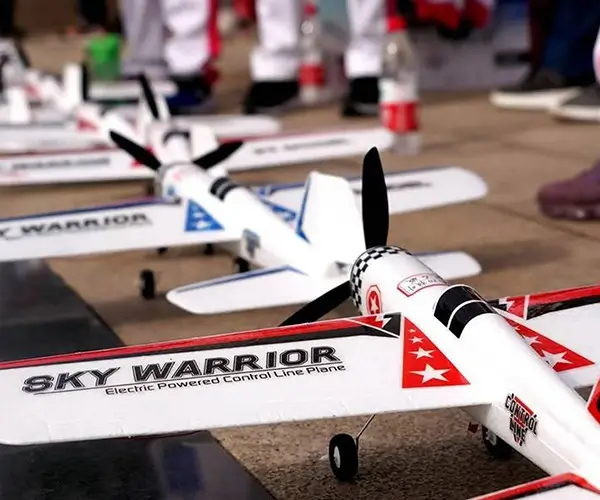Unlocking Precision: The Ultimate Guide to CNC Servo Motor Repair
In the realm of modern manufacturing, numerically controlled (NC) machines and computer numerical control (CNC) equipment have become the backbone of precision engineering. Central to these sophisticated machines are CNC servo motors—powerful, precise, and vital for smooth operation. When these motors falter, the entire production line can come to a halt, costing time, resources, and money. Therefore, understanding CNC servo motor repair isn’t just for technicians—it’s a key skill for any manufacturer aiming to keep their machinery at peak performance.

The Importance of CNC Servo Motors
Before diving into repair tips and troubleshooting, it's vital to appreciate why CNC servo motors are so integral. Unlike traditional motors, servo motors are designed for high precision, offering accurate position control, speed, and torque. They operate under closed-loop feedback systems, often using encoders, to continually adjust their position and speed, ensuring consistent operation.
In CNC machines, these motors control axes, spindles, and tool movements, enabling complex cuts and intricate designs with unparalleled accuracy. Because they’re so central, any failure affects the entire manufacturing process.
Common Issues in CNC Servo Motors
Like any mechanical or electrical device, CNC servo motors are susceptible to wear and tear over time. Some common issues that lead to malfunction or decreased efficiency include:
Overheating: Excess heat can damage winding insulation or electronic components, often caused by overloading or inadequate cooling.
Bearing failure: Bearings support the rotor; when they wear or fail, vibrations and noise increase, and precision suffers.
Encoder faults: Encoders provide feedback; if they malfunction or become misaligned, motor control becomes erratic.
Electrical faults: Winding short circuits, damaged power supply, or issues with the driver circuitry can cause operational failures.
Mechanical wear: Gear or shaft misalignment, corrosion, or physical impact can impair motor operation.
Identifying these issues early can prevent costly downtime and extend the lifespan of your servo motors.
The Diagnostic Process
When a CNC servo motor exhibits problems, a structured diagnostic approach is key:
Visual Inspection: Look for obvious signs like burned components, damaged wires, or bearing wear.
Check Connections: Ensure all wiring and connectors are secure and free of corrosion.
Test the Power Supply: Voltage levels should match manufacturer specifications.
Listen for Unusual Noises: Unusual sounds can hint at bearing problems or misalignments.
Use Diagnostic Tools: Multimeters, oscillosocopes, and specialized servo testers help pinpoint faults in windings, signals, or electronic controllers.
Encoder Testing: Verify encoder signals are clean and aligned properly.
Operational Testing: Run the motor under controlled conditions to observe performance and behaviors.
If your initial diagnostics indicate internal failure, it’s usually time to consider repair or replacement options.
DIY vs. Professional Repair
Some minor issues, like loose wiring or dirty encoders, can often be resolved with basic maintenance. However, when it comes to internal components like windings, electronic boards, or bearings, professional repair is recommended to avoid further damage.
Professional service providers have specialized equipment and expertise to accurately diagnose, repair, or replace damaged parts. Furthermore, they ensure that repairs meet industry standards, maintaining the safety and performance of your CNC machinery.
Professional CNC Servo Motor Repair: Techniques and Tips
When tackling CNC servo motor repair, precision and expertise make all the difference. Here’s a guide on how professionals approach the task, along with practical tips to maximize the lifespan and performance of these critical components.
Step-by-Step Repair Workflow
Detailed Inspection and Testing
A thorough assessment begins with disassembling the motor carefully. Professionals inspect windings for burns or shorts using insulation resistance testers. Encoders are cleaned and tested for accurate signal output.
Cleaning and Maintenance
Dirt, dust, and grease can impair operation. Ultrasonic cleaning for windings and brushes helps remove debris. Bearing lubrication or replacement often follows.
Replacing Damaged Parts
When components are beyond repair, replacements are essential. This could mean sourcing original parts such as specific encoders, power transistors, or windings. Precision in matching specifications ensures reliable operation.
Electronic Board Repair
Controller boards or driver modules are often the heart of the issue. Skilled technicians use soldering microscopes and specialized tools to replace faulty capacitors, transistors, or integrated circuits, restoring full functionality.
Testing and Calibration
Before reassembly, professional repair shops conduct extensive testing—checking torque, speed response, and feedback signals. Calibration ensures that the motor maintains its original accuracy.
Final Assembly and Quality Control
The repair process concludes with meticulous assembly, followed by testing in real-world conditions to confirm that the motor performs as expected.
Best Practices for CNC Servo Motor Maintenance
Prevention is better than repair. Regular maintenance can dramatically reduce the risk of failure:
Periodic Inspection: Schedule routine visual and electrical inspections. Cooling Systems: Ensure fans and cooling channels are clean and functioning properly. Lubrication: Follow manufacturer guidelines for bearing lubrication. Proper Operating Conditions: Avoid overloading and ensure stable voltage supply. Environmental Control: Minimize exposure to dust, moisture, and corrosive substances.
When to Replace vs. Repair
Not all problems are economical to fix. As a rule of thumb:
Replace when: The motor has severe winding shorts, extensive bearing damage, or the cost of repair exceeds 50% of new motor price. Repair when: Small-scale issues like encoder adjustments, minor winding repairs, or electronic component failures.
Understanding the balance between repair costs, downtime, and performance gains helps in making strategic decisions.
Innovations in CNC Servo Motor Repair
Modern repair facilities leverage advanced technologies, including:
3D imaging and digital twins for precise diagnosis. Automated winding and balancing machines to ensure uniform performance. Laser welding and micro-soldering for delicate electronic repairs.
These innovations help prolong the life of CNC servo motors while maintaining state-of-the-art precision standards.
Would you like to explore more about specific repair techniques, or perhaps look into selecting the right service provider?
Leveraging innovations in modular drive technology, Kpower integrates high-performance motors, precision reducers, and multi-protocol control systems to provide efficient and customized smart drive system solutions.




































